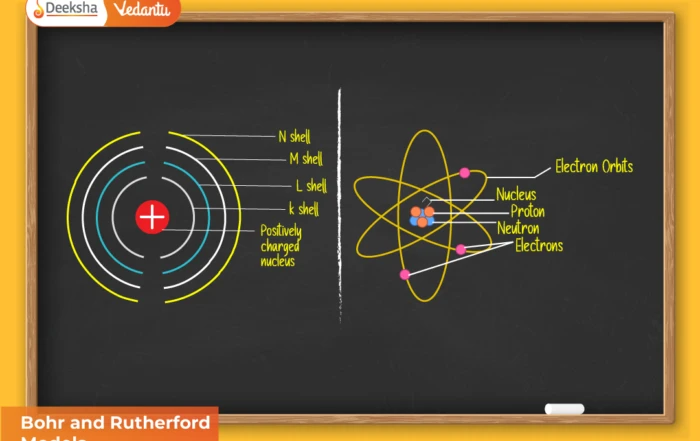
Introduction
In two-dimensional geometry, you’ve already studied how the x-axis and y-axis intersect at the origin to divide the plane into four quadrants. Any point on the plane can be represented using an ordered pair (x, y).
However, this is not enough when dealing with real-world 3D objects. For example:
- To describe the position of a bird flying in the air, you not only need its horizontal position (x, y) but also its height (z).
- To locate a satellite in orbit, you need three coordinates.
This is where 3D coordinate geometry comes in. It introduces a third axis (z-axis) perpendicular to the existing two, and together, these three axes create a 3D coordinate system.
The Coordinate Axes in 3D
In 3D space, there are three mutually perpendicular axes:
- x-axis – Horizontal axis (left to right).
- y-axis – Horizontal axis perpendicular to x-axis (front to back).
- z-axis – Vertical axis perpendicular to both x and y axes (up and down).
All three axes intersect at the origin (0, 0, 0).
These three lines are chosen such that they are mutually perpendicular (i.e., each axis is at 90° to the other two).
This system of three axes is called the Rectangular Cartesian Coordinate System in 3D.
The Origin
The origin is the point of intersection of the x-, y-, and z-axes.
- Coordinates of origin: O(0, 0, 0).
- It acts as the reference point to measure distances along the three axes.
Every other point in 3D space is located relative to this origin.
The Coordinate Planes
The three axes (x, y, z) together determine three coordinate planes, each containing two axes and being perpendicular to the third:
- XY-plane (z = 0): Contains the x- and y-axes. Any point on this plane has coordinates (x, y, 0).
- YZ-plane (x = 0): Contains the y- and z-axes. Any point on this plane has coordinates (0, y, z).
- ZX-plane (y = 0): Contains the z- and x-axes. Any point on this plane has coordinates (x, 0, z).
These planes intersect at the origin and divide the entire 3D space into eight octants.
Octants in 3D Space
Just as two axes divide the 2D plane into four quadrants, in 3D, three axes divide the space into eight regions called octants.
- First octant: x > 0, y > 0, z > 0
- Second octant: x < 0, y > 0, z > 0
- Third octant: x < 0, y < 0, z > 0
- Fourth octant: x > 0, y < 0, z > 0
- Fifth octant: x > 0, y > 0, z < 0
- Sixth octant: x < 0, y > 0, z < 0
- Seventh octant: x < 0, y < 0, z < 0
- Eighth octant: x > 0, y < 0, z < 0
Each octant is identified by the signs of (x, y, z).
Representation of a Point in 3D
Every point in space can be represented as an ordered triplet (x, y, z).
- x-coordinate: Distance from the YZ-plane.
- y-coordinate: Distance from the ZX-plane.
- z-coordinate: Distance from the XY-plane.
The sign of each coordinate depends on whether the point lies on the positive or negative side of the axis.
Example
Point P(3, –2, 4):
- x = +3 → 3 units from YZ-plane towards positive x-axis.
- y = –2 → 2 units from ZX-plane towards negative y-axis.
- z = +4 → 4 units from XY-plane towards positive z-axis.
So, P lies in the fourth octant (x > 0, y < 0, z > 0).
Visualization of Axes and Planes
- Imagine a cube.
- The three edges meeting at one corner represent the x-, y-, and z-axes.
- The three faces of the cube meeting at that corner represent the coordinate planes.
- The inside of the cube represents one octant.
This visualization is important for solving 3D geometry problems.
Equations of the Coordinate Planes
The coordinate planes can be represented by simple equations:
- XY-plane: z = 0
- YZ-plane: x = 0
- ZX-plane: y = 0
These are used in algebraic representation of geometry problems.
Solved Examples
Example 1: Identifying Octant
Find in which octant the point (–5, 2, –3) lies.
Solution:
x < 0, y > 0, z < 0 → Sixth octant.
Example 2: Equation of a Coordinate Plane
Find the equation of the plane that contains the x- and z-axes.
Solution:
- The plane containing x- and z-axes has equation y = 0.
So, it is the ZX-plane.
Example 3: Special Point Coordinates
What are the coordinates of a point lying on the XY-plane at a distance of 7 units from the origin?
Solution:
- Since it lies on XY-plane, z = 0.
- Distance from origin = √(x² + y²) = 7.
- So, coordinates = (x, y, 0), where x² + y² = 49.
Example 4: Symmetry in Octants
If P(3, –4, 2) lies in one octant, what are the coordinates of points symmetric to P with respect to:
(a) XY-plane
(b) YZ-plane
(c) ZX-plane
Solution:
- (a) Reflection in XY-plane → (3, –4, –2)
- (b) Reflection in YZ-plane → (–3, –4, 2)
- (c) Reflection in ZX-plane → (3, 4, 2)
Example 5: Distance from Coordinate Plane
Find the distance of point A(5, –2, 3) from the YZ-plane.
Solution:
- Distance from YZ-plane = |x| = 5 units.
Applications of Coordinate Axes and Planes
- Physics – To describe motion of particles in space using (x, y, z).
- Engineering – To construct 3D models of bridges, towers, etc.
- Computer Graphics – For 3D modeling in games and movies.
- Astronomy – To locate stars and planets in the universe.
- Exams – Used in deriving formulas for lines, planes, spheres in advanced chapters.
Common Mistakes by Students
- Confusing quadrants (2D) with octants (3D).
- Forgetting the correct sign of coordinates in each octant.
- Misinterpreting coordinate planes (e.g., assuming xy-plane means x = 0 instead of z = 0).
- Not visualizing correctly which axis is perpendicular to which plane.
Exam Weightage
- CBSE Boards: 3–4 marks (simple coordinate/plane questions).
- JEE Main: 1 question (basic, formula-based).
- KCET/COMEDK: 1–2 MCQs (direct sign or coordinate plane questions).
Practice Problems
- Identify the octant of point (–4, –3, 5).
- Find the equation of the coordinate plane containing y- and z-axes.
- A point is 6 units from the x-axis, 4 units from the y-axis, and lies on the xy-plane. Find its coordinates.
- Write the coordinates of points symmetric to (2, –5, 7) with respect to (a) XY-plane, (b) ZX-plane.
- Prove that the point (x, y, z) lies on the YZ-plane if and only if x = 0.
FAQs
Q1. How many coordinate planes exist in 3D geometry?
Three: XY-plane, YZ-plane, and ZX-plane.
Q2. What are octants?
The eight regions in 3D space formed by the intersection of coordinate planes.
Q3. What are the coordinates of a point on the x-axis?
(x, 0, 0).
Q4. How to determine the octant of a point?
Check the signs of (x, y, z).
Q5. Are octants equally important for exams?
Yes, identifying octants and understanding planes is frequently tested.
Conclusion
The study of coordinate axes and coordinate planes is the very foundation of 3D geometry. With the addition of the z-axis, we move from 2D to 3D, allowing us to describe the position of any point in space with an ordered triplet (x, y, z).
The three planes — XY-plane, YZ-plane, and ZX-plane — divide space into eight octants, and every point belongs to one of these regions. Understanding this framework helps us move on to advanced concepts like equations of planes, lines, and spheres in later chapters.
For students preparing for JEE, KCET, COMEDK, and CBSE, this section is scoring and straightforward. The main focus should be on visualization, sign conventions, and coordinate interpretation.











Get Social